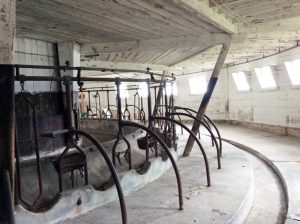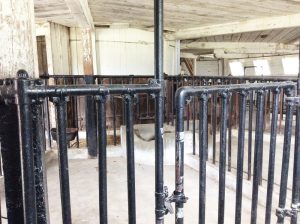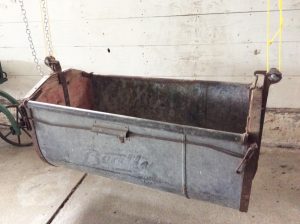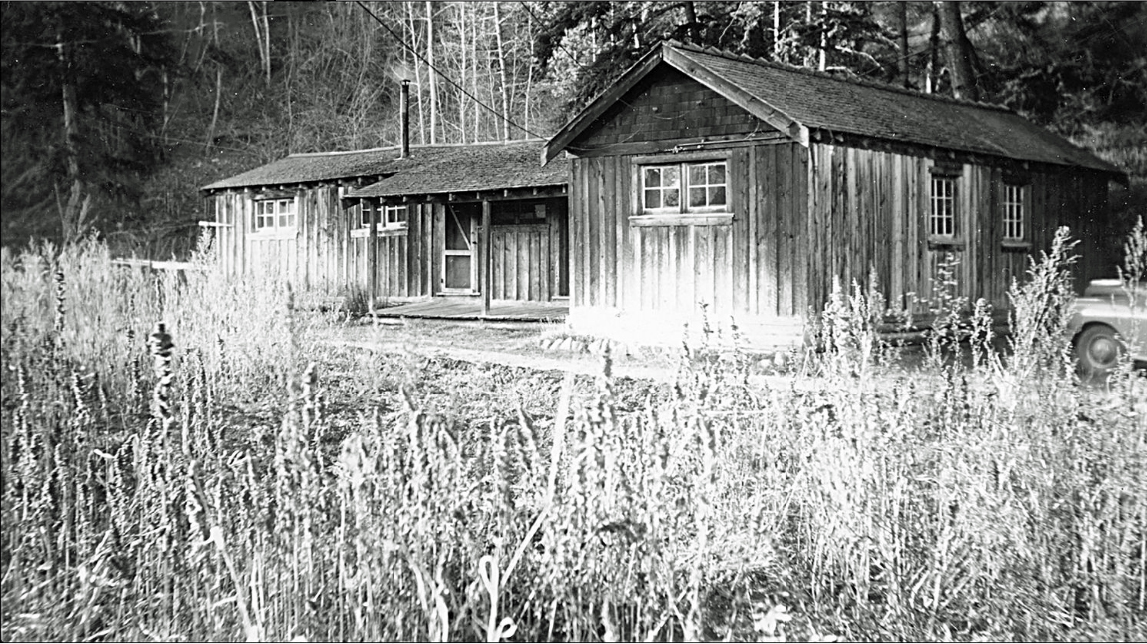Milking Stanchions
On one side of the ground floor in the barn were the milking stanchions, and on the other, a series of sturdy pens that could be used to house cows that had just calved, but were also strong enough to hold bulls.
The dairy herd usually numbered about 30 cows and calves. Milkers were those cows that had given birth to a calf and continued to produce milk. The Octagonal Barn milking stanchions were fitted for 15 cows – each placed at a custom height and neck width to fit a particular cow. At milking times, the cows would proceed into the barn and find “their” stanchion. A low concrete trough in front of the stanchions held hay. The barn had running water, very advanced for the times, with pipes running to buckets at each stanchion and pen.
Three large pens filled one-third of the barn, with hay troughs and water buckets. These were mainly used as birth pens and to keep the new calves with their dams for a period of time. The pens were crafted from wrought iron, which is extremely durable and strong – a necessary addition as the pens were occasionally used to hold bulls.
A low concrete trough circled the outside of the milking stanchions and pens. This was designed for easy clean-up of manure and waste. Above, a circular track ran throughout the barn with an exit detour through the rear doors to the slurry pit. The “honey bucket” hung suspended from the track and could be positioned anywhere in the barn for clean-up. Cleaning the barn was an ongoing chore and a priority for hygiene.
The dairymen lived at Fintry. Married men and families were provided houses and the single men shared a bunkhouse near the barn.





